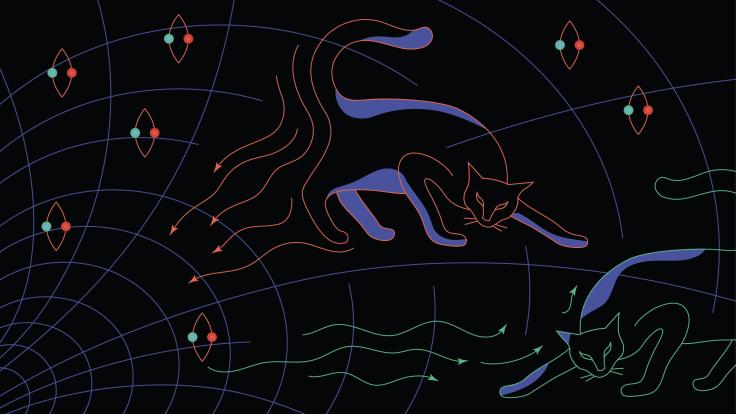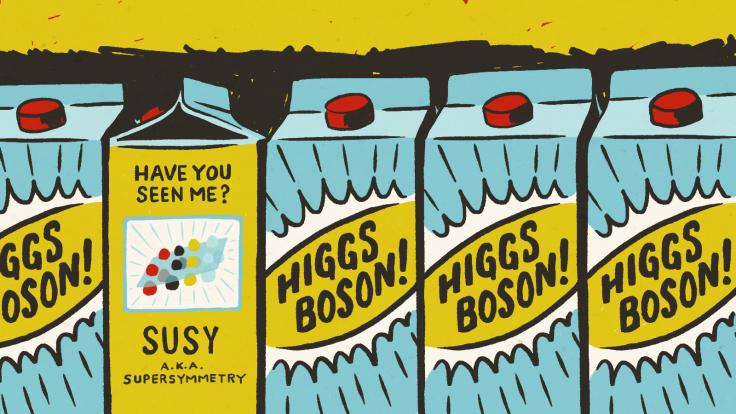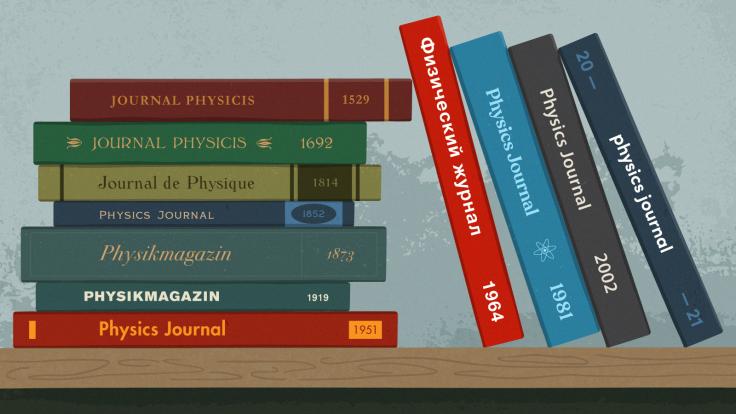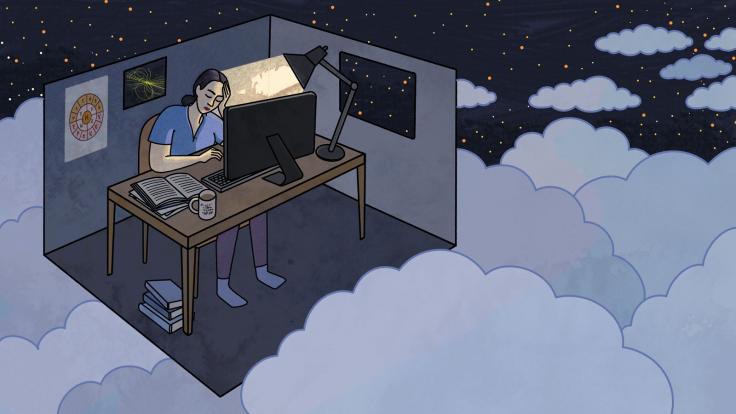In 2015, the Laser Interferometer Gravitational-Wave Observatory detected massive ripples in spacetime caused by the collision of two black holes. It was the first direct observation of gravitational waves, sought by physicists since Albert Einstein predicted their existence in 1916.
LIGO scientists prepared to announce the enormous discovery to the world. Translators worked to rewrite the embargoed press release in Chinese, French, Hindi and Korean (to name only a few).
Corey Gray, a detector operator at LIGO’s Hanford Observatory in Washington, proposed adding another language to the collection. He suggested that his mother, Sharon Yellowfly, might be able to translate the press release into Blackfoot, the Algonquin language spoken by the Siksika, Kainai, Piikani and Blackfeet, the four bands of the Indigenous Blackfoot Confederacy of North America.
It was the first press release announcing a result that would earn scientists a Nobel Prize to be translated into Blackfoot. And it was a high-profile demonstration of the way Yellowfly and other members of the Siksika Nation work to reinvigorate a language that was for over a century purposefully pushed to the edge of extinction.

A process of assimilation
The Blackfoot people live in the Northern Great Plains, in what is now Alberta, Canada, and the US state of Montana—though early on, their territory was larger, spanning northern Saskatchewan to northern Wyoming.
Almost as soon as Europeans arrived with intentions of colonizing the land, they established day and boarding schools for Indigenous children. The purpose of these schools was to strip the children of their cultures, including their languages.
As the 2015 report of the Truth and Reconciliation Commission of Canada put it: “These measures were a part of a coherent policy to eliminate Aboriginal people as distinct peoples and assimilate them into the Canadian mainstream against their will.” The government supported these efforts, eventually mandating every Indigenous child attend one of these schools, because “[i]f every Aboriginal person had been ‘absorbed into the body politic,’ there would be no reserves, no Treaties, and no Aboriginal rights.”
As a child in Canada in the 1960s, Yellowfly was forced to attend a Christian boarding school for Blackfoot children. She was separated from her family and her culture and physically punished for speaking her own language.
As the Truth and Reconciliation Commission report notes, many children did not survive the abuse they experienced at the schools. Yellowfly made it through, leaving school in her senior year.
When she was 23 years old, living in California, she started “just copying down [Blackfoot] words” she heard from her parents and elders, she says. At first, she was just trying to collect words on paper for her children. But soon she had the idea to do something more.
“A lot of the little kids weren't speaking Blackfoot at all, and at some point, I thought, there will be a need for a dictionary. When the elders pass, a lot of what they know and have experienced will be gone.”
Several decades later, her dictionary has grown quite large. And now she is one of the elders adding new words to its pages.
Speaking of physics
In polysynthetic languages such as Blackfoot, most words are made up of smaller word bits called “morphemes.” The word ‘snack’, for example, translates in Blackfoot to ‘a'písttaapiksistaki’, a combination of morphemes meaning “move about tasting food.”
Languages with hundreds of millions of speakers are constantly evolving, adding new terms as people find new ways to express themselves. But native Blackfoot speakers number in the few thousands, so terms for concepts such as “Einstein’s theory of general relativity” and “gravitational waves” had yet to catch on.
Yellowfly took some poetic license in the LIGO press release she translated. She referred to Einstein’s theory as bisaatsinsiimaan, or "beautiful plantings.”
“Trying to explain his theory would have probably taken three to five pages in Blackfoot,” she says. “I thought ‘beautiful plantings’ was appropriate because there are so many things coming from this theory, and I’m sure there will be more. ‘Plantings’ was the word for it; they’re harvesting from that garden.”
Yellowfly has kept up the effort to translate announcements related to gravitational-wave detections. In the process, she has created new ways to express concepts including “plot,” “inspiraling,” and “percentages.”
Some words and phrases can be directly translated—“black hole” is simply the Blackfoot words for “black” and “hole”—and other translations are more conceptual. Her word for “gravitational waves,” for example, translates to “stick-together waves.”
“I think of what she does as poetry,” Gray says. “I always love hearing the new words that she comes up with.”
Helping a language to thrive
“Humanity is facing a massive extinction,” according to the Endangered Languages Project, managed by First Peoples’ Cultural Council and a team at the University of Hawai’i at Mānoa. “[L]anguages are disappearing at an unprecedented pace. And when that happens, a unique vision of the world is lost.
“With every language that dies we lose an enormous cultural heritage; the understanding of how humans relate to the world around us; scientific, medical and botanical knowledge; and most importantly, we lose the expression of communities’ humor, love and life.”
Indigenous language revitalization is an important effort in the 21st century, says advocate Kanentogon Hemlock. And the best way to revitalize a language is to use it.
“You have to try to bring the language into what you do: into the activities, into the work that’s being done,” he said in an online livestream for the Canadian education organization Think Indigenous.
Continuing to use it in everday life doesn’t just revitalize only the language, he said—“Language forms the way that we think and the way that we see the world. So by bringing language back to everything that we do, it’s also reinvigorating our way of life.”
Modern examples of efforts to bring endangered languages into regular use are multiplying: Cartoons, video games, and movies (including Star Wars and Finding Nemo) have been translated into Indigenous languages. In 2019, a hockey game broadcast in Canada was commentated in another Algonquin dialect, Cree; in January 2020, another hockey game was commentated in Blackfoot. Blackfoot speakers are teaching others digitally via YouTube channels, apps and virtual guides, and in-person in programs at schools and universities.
Gray says he would love to recruit people from other tribes to translate LIGO’s findings into even more languages. “Indigenous languages have been hammered away for so long,” he says, “but the fact that they’ve survived shows the resilience of Indigenous peoples, and my mom is a perfect example of that.”












